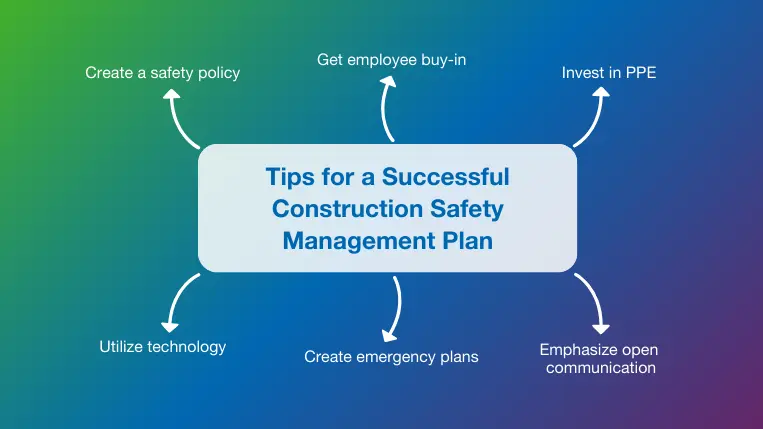Discover how mastering Construction Design and Management Regulations can transform your building project from a regulatory nightmare into a seamless success story.
In today’s complex construction landscape, the Construction Design and Management (CDM) Regulations 2015 have emerged as a crucial framework for ensuring project success. With statistics showing that 85% of businesses affected by these regulations don’t consider themselves part of the construction industry, understanding and leveraging CDM regulations has never been more important for project outcomes.
Understanding CDM 2015: Your Project’s Foundation
The Construction (Design and Management) Regulations 2015 represent a significant evolution from their 2007 predecessor, introducing crucial changes that have reshaped the construction landscape. These regulations apply to all construction projects in the UK, regardless of size or scope. The most notable changes include the removal of the CDM coordinator role, introduction of the principal designer position, and simplified notification requirements. Recent data indicates that projects following CDM 2015 guidelines have seen a 23% reduction in workplace accidents, demonstrating the regulations’ effectiveness in promoting safety and efficiency.
The Five Pillars of CDM Success
- Introduction and Interpretation: Establishes the scope and application of the regulations across different project types
- Client Duties: Outlines responsibilities for project owners and commissioners
- Health and Safety Roles: Defines key positions and their respective duties
- General Site Requirements: Specifies standards for workplace safety and welfare
- General Provisions: Covers enforcement, exemptions, and legal requirements
Key Roles and Responsibilities: Who’s Who in CDM
Understanding the hierarchy of responsibilities under CDM 2015 is crucial for project success. The client sits at the top, holding ultimate responsibility for the project’s safety and compliance. The principal designer, a role introduced in CDM 2015, manages health and safety during the pre-construction phase, while the principal contractor oversees safety during construction. Studies show that projects with clearly defined roles experience 40% fewer safety incidents and achieve better completion rates.
Documentation and Compliance: Getting It Right
- Construction Phase Plan: A comprehensive strategy for managing health and safety during construction
- Pre-construction Information: Essential project details and risk assessments
- Health and Safety File: Ongoing documentation of safety measures and procedures
- Risk Assessments: Detailed evaluation of potential hazards and mitigation strategies
- Method Statements: Step-by-step procedures for high-risk activities
Common CDM Pitfalls and How to Avoid Them
Many projects stumble due to common CDM compliance issues. Recent surveys indicate that 60% of non-compliance cases stem from inadequate documentation and unclear role allocation. To avoid these pitfalls, ensure early appointment of key duty holders, maintain comprehensive documentation, and establish clear communication channels between all parties. Regular training and updates for team members can reduce compliance issues by up to 75%.
Maximising CDM Benefits: Beyond Basic Compliance
CDM regulations offer opportunities beyond mere compliance. Progressive companies are using CDM frameworks to enhance project efficiency, reduce costs, and improve stakeholder communication. Projects that proactively embrace CDM principles report a 30% improvement in project delivery times and significant cost savings through better risk management and reduced incidents.
The Future of Construction Safety: CDM Evolution
The construction industry continues to evolve, and CDM regulations are adapting accordingly. Emerging trends include increased focus on digital documentation, integration with Building Information Modelling (BIM), and enhanced emphasis on mental health and wellbeing. Industry experts predict that future updates will incorporate more technological requirements, particularly around digital safety management systems and real-time monitoring.
Making CDM Work for Your Project
- Conduct thorough initial project planning and risk assessment
- Appoint competent duty holders early in the project lifecycle
- Implement robust documentation systems and regular review processes
- Ensure effective communication channels between all parties
- Maintain continuous training and awareness programmes
- Regular audit of compliance requirements and safety measures
By embracing CDM regulations as a strategic tool rather than a regulatory burden, construction projects can achieve superior outcomes in safety, efficiency, and cost-effectiveness. The key lies in understanding that these regulations aren’t just about compliance – they’re about creating a framework for project success that benefits everyone involved, from workers on site to end-users of the completed structure.
FAQ
What is Regulation 9 Rule 7?
BAAQMD Regulation 9 Rule 7 limits the permitted emissions of NOx and CO from boilers, steam generators and process heaters. The Bay Area Air Quality Management District (BAAQMD) develops regulations based on the measures identified in its Clean Air Plan.
What is regulation 12?
In Regulation 12 the CQC set out the requirement for care and treatment to be provided in a safe way for service users and for “avoidable harm” to be eliminated.
Who is a designer under CDM regulations?
In CDM the term “Designer” has a very broad meaning and includes anyone who prepares design drawings and design details, or who specifies the use of a particular method of work, or material. This provides the potential for anyone to become a designer by default. People included could be; Architects.
What is Regulation 9 of the CDM?
Regulation 9 of the Construction (Design and Management) Regulations 2015 (CDM) sets out the duty of designers to eliminate, reduce or control foreseeable risks that may arise during construction or maintenance activities.
What is the meaning of CDM?
A Cash Deposit Machine (CDM) is a self-service terminal that allows customers to deposit cash directly into their bank accounts.
Sources
[1] https://www.hse.gov.uk/construction/cdm/2015/index.htm
[2] https://www.procore.com/en-gb/library/cdm-2015-explained
[3] https://en.wikipedia.org/wiki/Construction_(Design_and_Management)_Regulations_2015


Leave a Reply